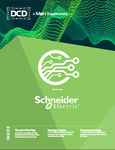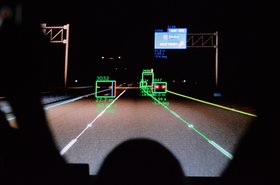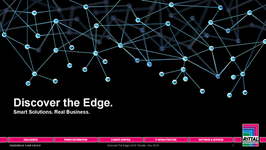The technologies that run our world are evolving beyond imagination. New applications, new devices and new integrations come into our workplaces and our lives every day – simplifying and assisting countless tasks. Yet all this progress can’t efficiently or optimally run on the IT infrastructure of five years ago.
Organizations need to consider whether their existing set up can sustain this dramatic increase in connections and processes. Cloud computing remains central to modern network architecture, but the exciting potential of IoT and other emerging technologies means it’s not always efficient to send all data to the cloud for processing. It’s time for a new approach.
Flexing to remove the limits of cloud computing
Sensors and devices are continuously sending more and more data, and the wide-scale adoption of 5G will only mean this will rise further. Real-time monitoring of networks and data centers will become imperative, as the huge number of computations and connections will need traffic management that is automated and considers real-time data center performance, traffic volume and speed.
Today’s cloud and network infrastructures are not limitless – with latencies that can range from 50ms to more than 200ms. That can negatively impact the user experience, but more significantly it will slow the uptake of the next wave of interactive applications. Cloud computing might give the impression of having infinite expansion potential, but the fact remains that remote services create increased system latency.
Leveling up the potential of emerging technologies
As companies rethink their approach to IT infrastructure, Multi-access Edge Computing (MEC) is emerging as a faster option, with the same agility, scalability and flexibility of public cloud. Edge computing is a form of network architecture that brings cloud computing closer to the end-user. MEC takes this a step further by moving to the edge of the operator network to create faster, more efficient and intelligent networks. This means businesses and developers can choose where to run their workloads, depending on the specific needs of certain devices or applications – whether that’s latency, bandwidth or even data sovereignty requirements. This flexibility means MEC can help unlock the full benefits of innovative technologies like 5G, IoT, and SDN and other innovative technologies.
These technologies process vast amounts of data, yet their potential will remain untapped without rethinking the architecture of the network. With much of this data generated within, or at the edge of, the network it makes sense to streamline how it is handled. Through Edge computing, data can be sent to the cloud in batches when bandwidth needs aren’t as high – improving performance and saving money. The specific benefits of this approach are broad and varied, particularly across sectors, but the core benefit of MEC is creating intelligent communications solutions that drive tangible business outcomes.
Minimizing certain risks
Today more than ever, there is little tolerance from employees, clients, or consumers when it comes to IT failures - fortunately we are entering a new age of technologies that will minimize this risk. Software defined networks (SDN) are becoming increasingly adept at identifying specific customer needs and running workloads to locations that best serve specific cost, latency and security requirements.
When combined with the potential of AI to inform decision making, we can see a perfect storm of capabilities that will deliver a step change in how computing and networks converge to deliver a personalized service to customers who embrace these technologies. The added capability of MEC provides an extra layer, protecting essential services from outages or connectivity issues stemming from rare, but damaging ISP failures or cloud server downtime.
This approach to network architecture can also enable local hosting of data, allowing data privacy to be better governed. All the data generated does not need to be sent to the cloud immediately – or even at all – and MEC allows for local decisions to be made at the network edge. One of the most significant benefits of MEC stems from its inherent low latency.
This can be hard to visualize through describing technical advantages so, to put it into context, imagine an IoT-enabled smart factory. Through using data analysis and machine learning at the Edge, engineers can pinpoint and resolve equipment faults in minutes, rather than hours – dramatically improving productivity and efficiency on the production line. In addition, the low latency afforded by MEC means that safety incident can be detected much more quickly, so activity can be halted immediately before any harm is done.
Tapping into the potential of Edge computing
As the capabilities of devices and applications continue to expand, businesses need to be able to manage and optimize them to provide the best services and solutions to customers. Edge computing helps expand the capabilities of cloud, but it is more than just a technology. It is a design framework that will redefine and refine emerging technologies – from IoT through to AI.
A combination of other solutions might still be needed, but Edge computing will be the driving force in pushing these innovative areas towards widescale adoption. In summary, Edge computing will help businesses balance demand on their networks – placing resources and intelligence where they are needed and making the most of traffic dips. This transformative approach to network architecture will facilitate streamlined processes that unlock improved efficiency and effectiveness.






